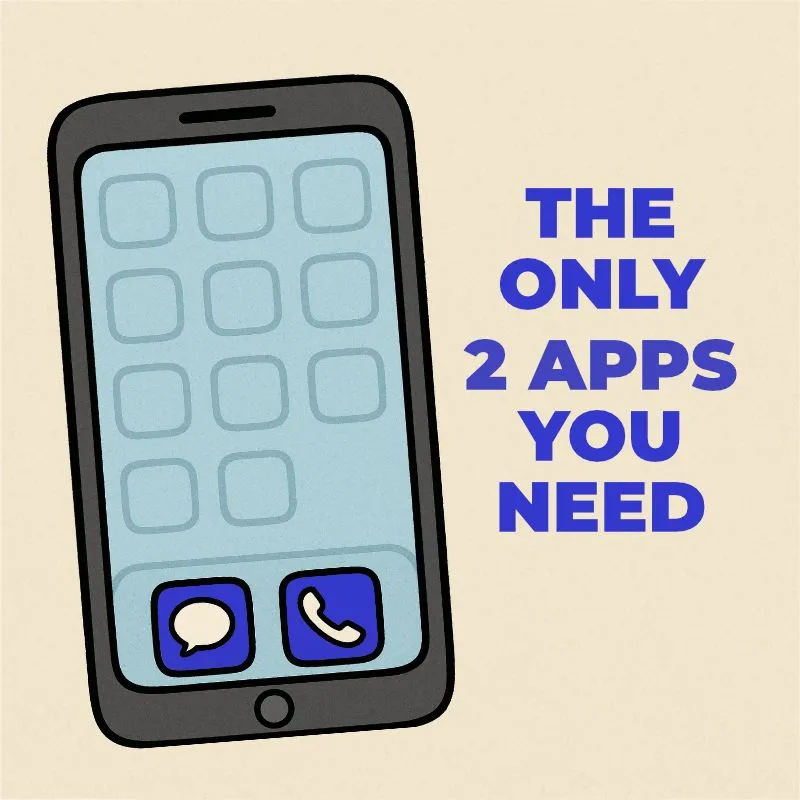AI Agents are Rewriting the Rules of Healthcare Communication
Every hospital, clinic, and healthcare provider seems to have their own app. And each one is a whole new system to learn.
You create an account, set a password, forget the password, reset it, and just when you’ve figured it out, the app updates, the layout changes, and you’re lost—again.
All you wanted was to talk to your doctor. Or see your test results.
Why can’t you just ask, “Show me my blood work”—and get an answer?
That’s the promise of agentic AI. No logins, no downloads, no tutorials, no apps to learn.
Just ask—and get what you need.
But don’t just take our word for it.
Even Microsoft CEO Satya Nadella has said that many business apps will collapse, replaced by more fluid and intelligent AI agents.
The Problem with Patient-Facing Apps
Healthcare has long been plagued by fragmented communication. Patients are often funneled into portals and apps that are supposed to streamline the care journey but too often create friction instead. Downloading a new app, remembering another login, and navigating unfamiliar interfaces are barriers—especially for patients managing multiple conditions or lacking digital fluency.
From day one, TxtSquad has bet against this model. We’ve argued that apps demand too much from patients. And in healthcare, we can’t afford friction — friction costs lives.
AI Agents Meet Patients Where They Are
We’ve been building for a future of AI-powered agents that live where patients already are, channels they already know and use: text messages and phone calls.
These agents aren’t just automated responders. They’re intelligent assistants that:
- Text patients to book appointments, explain test results, or answer prescription questions—24/7.
- Call patients with voice agents that eliminate endless phone trees and voicemail black holes and connect patients to real humans faster.
- Proactively reach out to offer reminders, preventive nudges, and health guidance before problems become emergencies.
We're not just imagining this future—we're already deploying it. And the results speak for themselves: more accessible care, shorter response times, and happier patients.
A New Model for Healthcare Tech
Imagine an AI agent that can simultaneously access a hospital’s EHR, a pharmacy’s inventory system, and a health insurer’s billing platform—then coordinate a refill, schedule a follow-up, and calculate the copay—all in one natural-language interaction.
This is an example of what Microsoft’s Nadella is talking about when he says that instead of siloed systems, we’ll have interoperable agents that manage logic across multiple databases, perform complex tasks, and orchestrate workflows on behalf of users.
Maurizio Ceccacci, Associated Digital Coach for SMB, describes it as “returning to a focus on solving the problem rather than on the technology to be implemented.”
McKinsey also has an excellent article that details many of the problems in healthcare that can be solved with AI including e-triage, improved patient education, customer feedback analysis, suggesting services based on personal factors, and much more.
The Road Ahead
Of course, all of these problems won’t be solved overnight. Legacy systems are deeply entrenched and change in healthcare is notoriously slow. But as Nadella and others have noted, companies that build AI-first today are positioning themselves to lead tomorrow.
At TxtSquad, we’re not just talking about the future. We’re deploying it. Our AI agents are already improving communication for clinics, pharmacies, and health systems across North America.
And we’re just getting started.
Someday soon, instead of ‘download our app’ your healthcare provider will say ‘just call or text us’ … the AI will do the rest.
